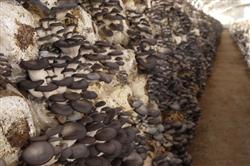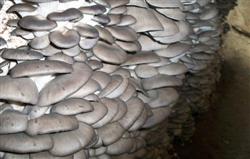How to grow Pleurotus ostreatus in summer?

How to grow Pleurotus ostreatus in summer? Please introduce that Pleurotus ostreatus is generally cultivated in autumn and winter, and it is mainly sold freshly, but its price is greatly affected by the market in autumn and winter. Generally speaking, when a large number of fresh mushrooms are on the market in autumn and winter, the price is lower, while in summer, there are fewer fresh mushrooms and the price is higher. Due to the high temperature and humidity in summer, the requirements for cultivation techniques are higher. According to the author's many years' cultivation experience, the following key techniques can improve the success rate of cultivation and obtain higher economic benefits. Timely cultivation generally begins to prepare mother seed, original seed and cultivated species from mid-March to early April, feeding cultivation from mid-May to mid-June, mushrooms on the market from early June to early July, and cultivation can be finished in mid-October. High-temperature or wide-temperature varieties should be selected for summer cultivation. Good varieties should first have the characteristics of high temperature and high humidity, followed by impurity resistance, disease resistance, high yield and high quality. Different varieties have different characteristics and adapt to different environments. Varieties introduced from other places or strains isolated locally should first go through the tests of temperature tolerance, moisture tolerance, impurity resistance and raw material adaptability before they can be cultivated on a large scale. The most common problems in high-temperature season are burning and pollution. The following methods can be used to improve the success rate of bacteria: 1. Clinker cultivation; 2. Fermented material cultivation; 3. Raw material cultivation, adding appropriate amount of fungicide. The three methods all have the characteristics of fast bacteria and low pollution rate, but the clinker cultivation cost is high and is not commonly used. When using fermentation materials, we should pay attention to thorough fermentation, completely dissipate heat before bagging. In the process of fermentation, the material should be properly covered or sprayed with insecticides to prevent mosquitoes and flies from spawning. Using raw material cultivation, fungicides must be added, otherwise it is easy to burn materials and pollution. High efficiency, low toxicity and broad-spectrum fungicides should be selected, such as Tekedo, Wanxing, Dex disinfectant, carbendazim and so on. Cultivation management summer cultivation, the cultivation site should choose a well-ventilated, cool and clean place. Caves, caves, air-raid shelters, basements are relatively cool, but often poor ventilation, resulting in lower growth quality of mushroom stalks, therefore, attention should be paid to strengthening ventilation. During the period of mushroom emergence, we should take water management as the center, focus on ventilation management, and reduce the temperature as much as possible. In order to avoid burning bacteria at high temperature, the cultivation bags should be stacked three-dimensional. During mushroom production, there should be a 10cm gap between the bags of each layer and the bags, separated by corn stalks between the layers, and the upper and lower two-layer bags should be staggered in the shape of "product", and the heap height should not exceed 5 to 6 bags. The sunny side of the mushroom shed should be closely shaded, and the vents should be extended outward with grass curtains and sprayed with water to increase the humidity of the vents. During the period of budding and mushroom emergence, we should focus on spraying water on the bacterial bag in order to cool and humidify. After a tide of mushrooms, you should replenish nutritious water once, and after 3-4 tide mushrooms, you can take off the bag and cover the soil to produce mushrooms. Click to get more cultivation techniques of Pleurotus ostreatus
- Prev

How to manage planting Pleurotus ostreatus in summer?
How to manage planting Pleurotus ostreatus in summer? Please introduce the method Pleurotus ostreatus can be managed with reference to the following methods in summer: the mycelium block (bag) air-drying method is more simple and convenient, and the mycelium block (bag) without mushroom or only 1 or 2 stubble mushroom is dried (the bag without mushroom need not be opened) and placed in a cool and ventilated place. If you release.
- Next

How to grow Pleurotus ostreatus in summer?
How to grow Pleurotus ostreatus in summer? Please introduce that due to the high temperature in summer, although the spawning period is short and the mushroom is fast, the disease, insect and miscellaneous bacteria are active and harmful. In production, the following measures are generally taken to help Pleurotus ostreatus spend the summer safely. First, the method of burying soil outside the trench has unlimited length and width in the higher terrain outside the trench.
Related
- Fuxing push coffee new agricultural production and marketing class: lack of small-scale processing plants
- Jujube rice field leisure farm deep ploughing Yilan for five years to create a space for organic food and play
- Nongyu Farm-A trial of organic papaya for brave women with advanced technology
- Four points for attention in the prevention and control of diseases and insect pests of edible fungi
- How to add nutrient solution to Edible Fungi
- Is there any good way to control edible fungus mites?
- Open Inoculation Technology of Edible Fungi
- Is there any clever way to use fertilizer for edible fungus in winter?
- What agents are used to kill the pathogens of edible fungi in the mushroom shed?
- Rapid drying of Edible Fungi

